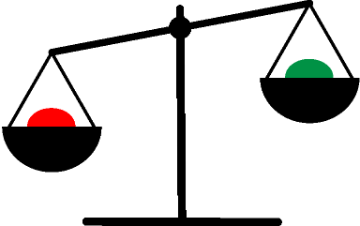Background
From David Burn, MD's foundational book, Feeling Good, this exercise evaluates the consequences of silent assumptions with a Cost-Benefit Analysis. This exercise is different from other cognitive techniques because it deals with limiting thoughts from the perspective of motivation rather than truth. Ask yourself, “How will it help me to believe this negative thought and how will it hurt me?” If it turns out the disadvantages are greater, you will find it easier to talk back to the thought and or leave it behind.
Here, you honestly list the advantages and disadvantages of believing a given thought. At the end you can decide if this attitude is helping you or hurting you. Once you've written advantages and disadvantages of an attitude, ask yourself which side offers greater utility? Does it hurt you more than it helps you? Once you answer this you can right a revised thought that is more useful and believable.
This exercise can be used on a feeling (like getting angry when someone lets you down), a negative thought (like “Other people constantly look down on me”), or a behavior pattern (like scrolling social media and lying in bed when your depressed). You can also target a self- defeating belief like “I must always try to be perfect”.
instructions
- Select the automatic thought, feeling, or behavior
- In the left column, write what positives come with this.
- In the right column, write what negative come with this.
- Rate how much you believe the left column helps you and right column hurts you with the slider.
- With this in mind, replace this thought, feeling, or behavior with a more rational response.








